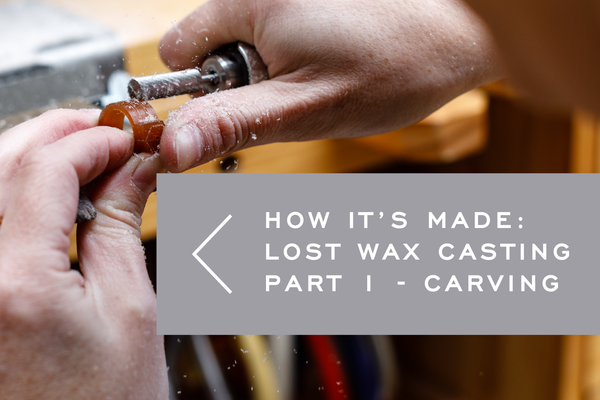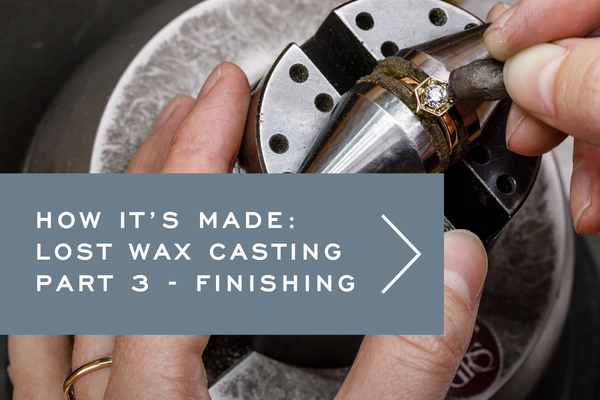Photography by Ryan Leggett
Casting courtesy of Jena Hounshell Casting
In Part 1 of our 3-part series, we carved a ring from a block of wax to be cast into precious metal.
Today for Part 2, I’ll take you through the steps of molding this wax model and then casting it in gold.
Casting the Wax Model in Gold
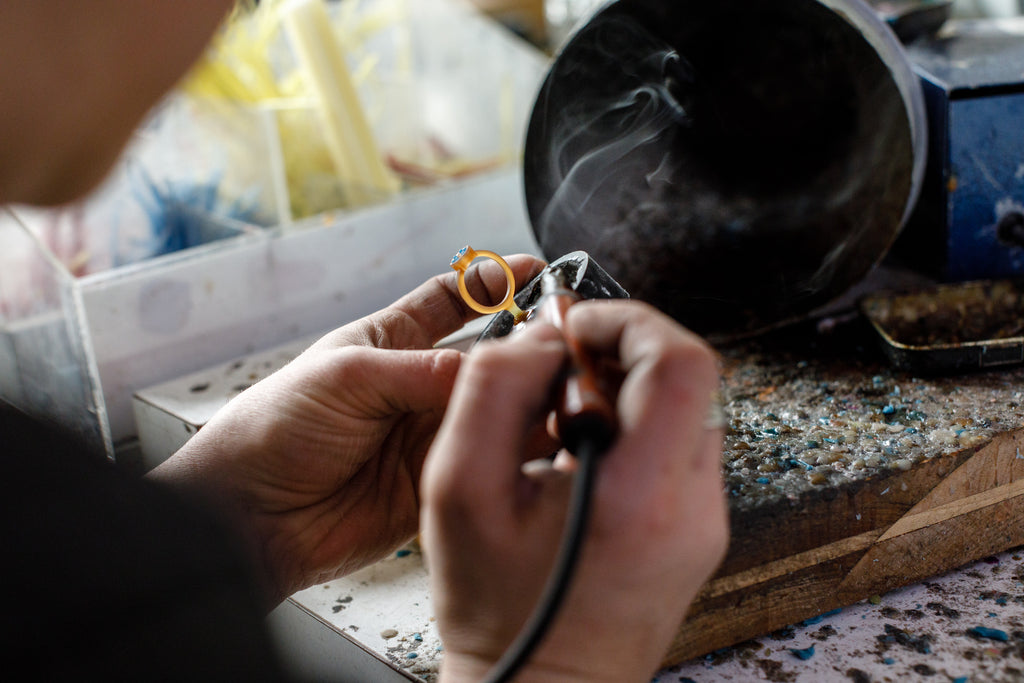
The wax ring is attached to a rubber base to create a mold. A wax rod called a sprue connects the two. This will become the channel through which molten gold flows into the ring.

A metal flask is secured onto the rubber base. Then investment plaster is poured into the cylinder and over the wax model. We pour slow to avoid causing air bubbles in the plaster. This part always reminds me of pouring pancakes.
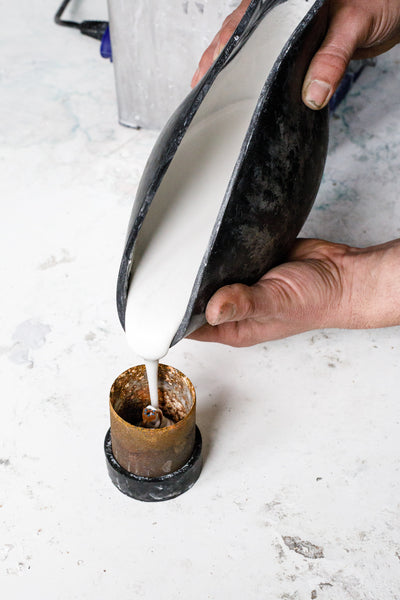

The flask goes into a vacuum chamber that shakes out any remaining air bubbles. We let the plaster harden and then remove the rubber base.
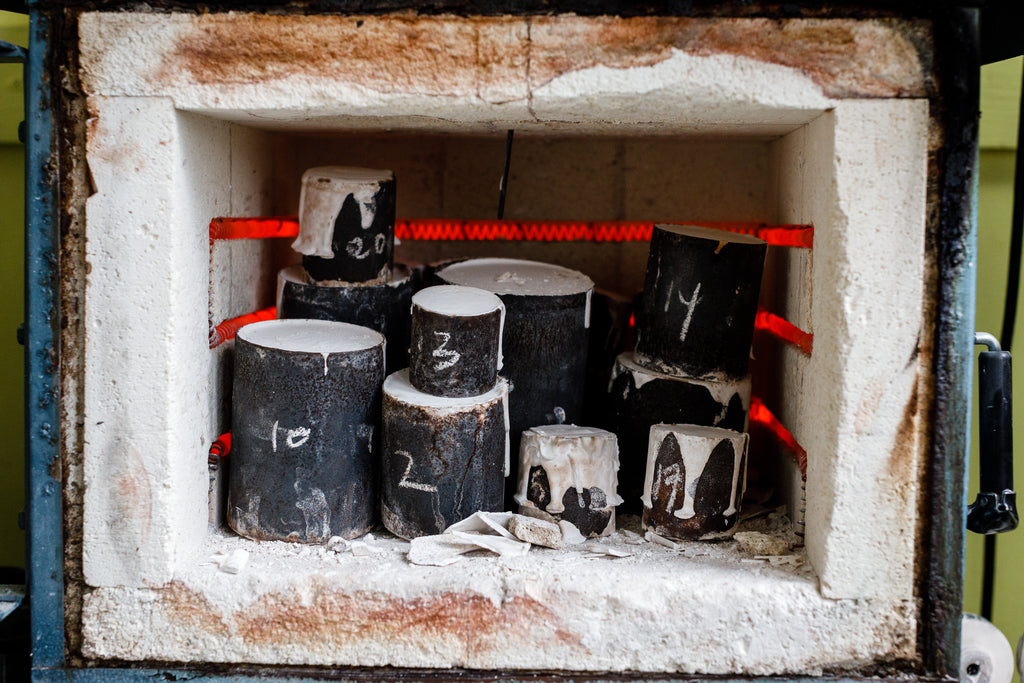
The flask is heated overnight in an electric kiln to bake the plaster until it’s fully cured. As the heat rises our wax melts away, leaving a ring-shaped cavity inside of the plaster.
Now it’s time to melt some gold!
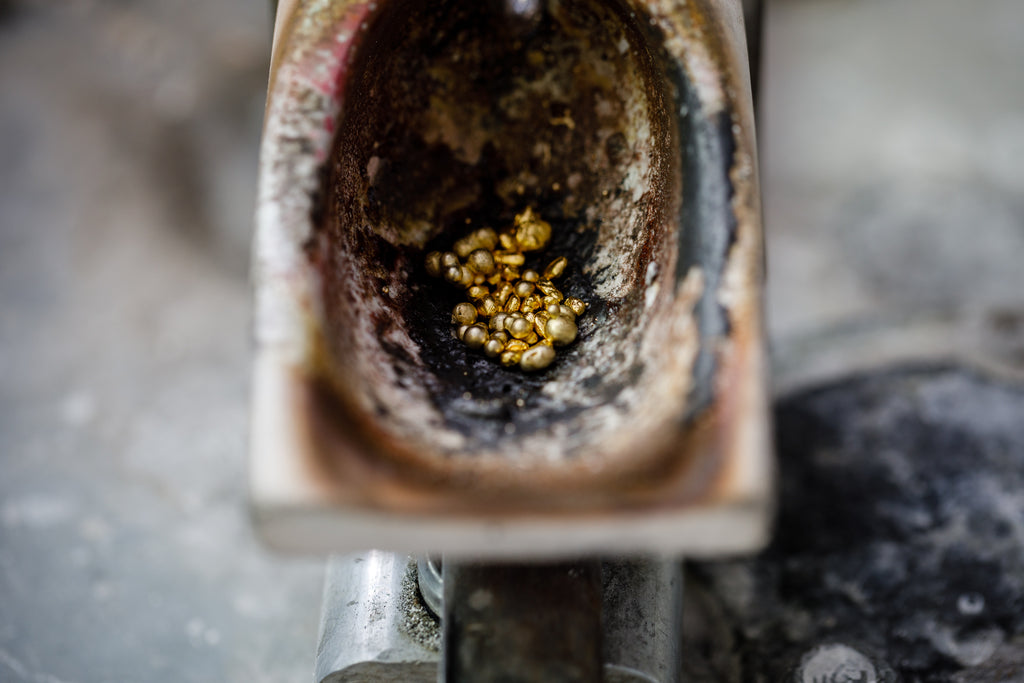
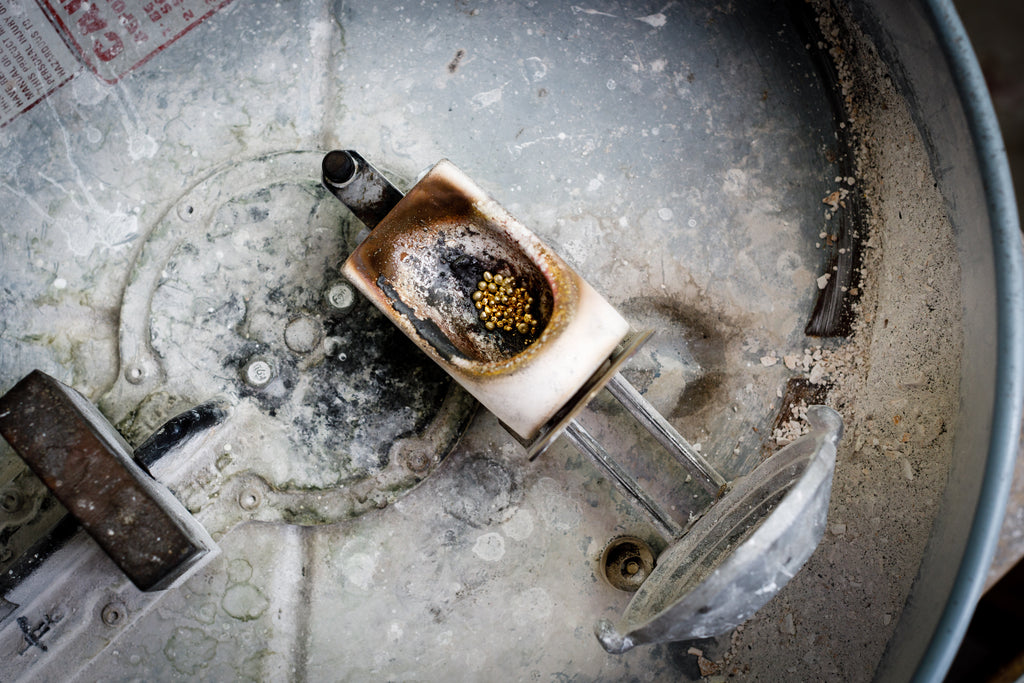
The casting grain is weighed and placed into the crucible to melt. We need enough metal to fill our whole ring, plus some extra for the sprue and button. A healthy casting has a cute button on the bottom (you'll see!)
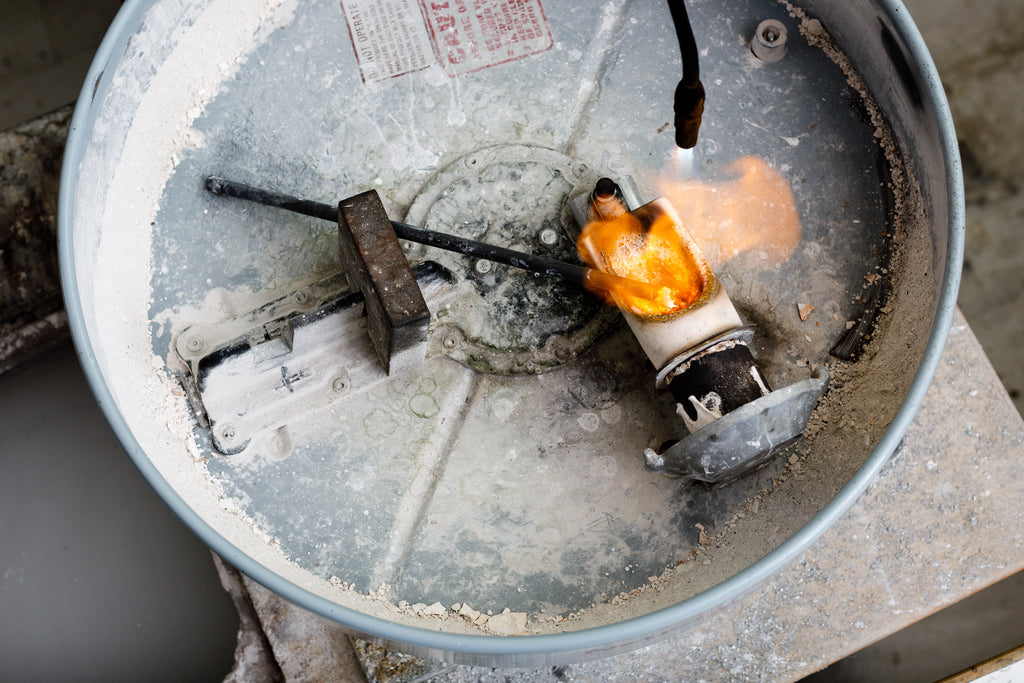
Our flask gets loaded next to our crucible in a spring loaded centrifugal caster. We light the torch and begin to melt down the casting grain. Watching this flame and the molten gold dance feels a bit like magic.


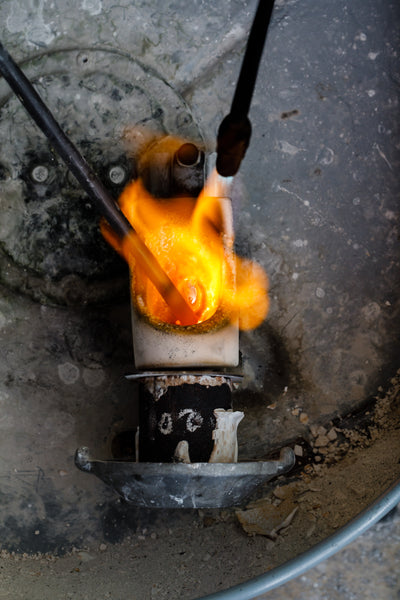
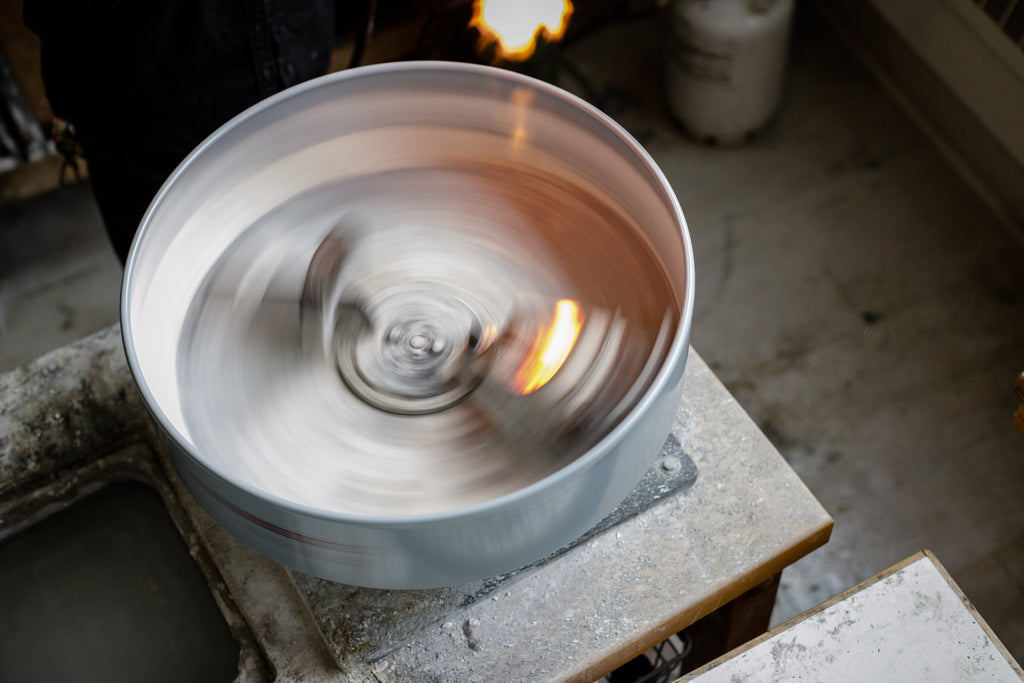
When the gold has reached the right temperature, we remove the flame. Then we pull a lever that sends our crucible and flask spinning in circles. The molten metal is forced out of the crucible and into the flask using centrifugal force.
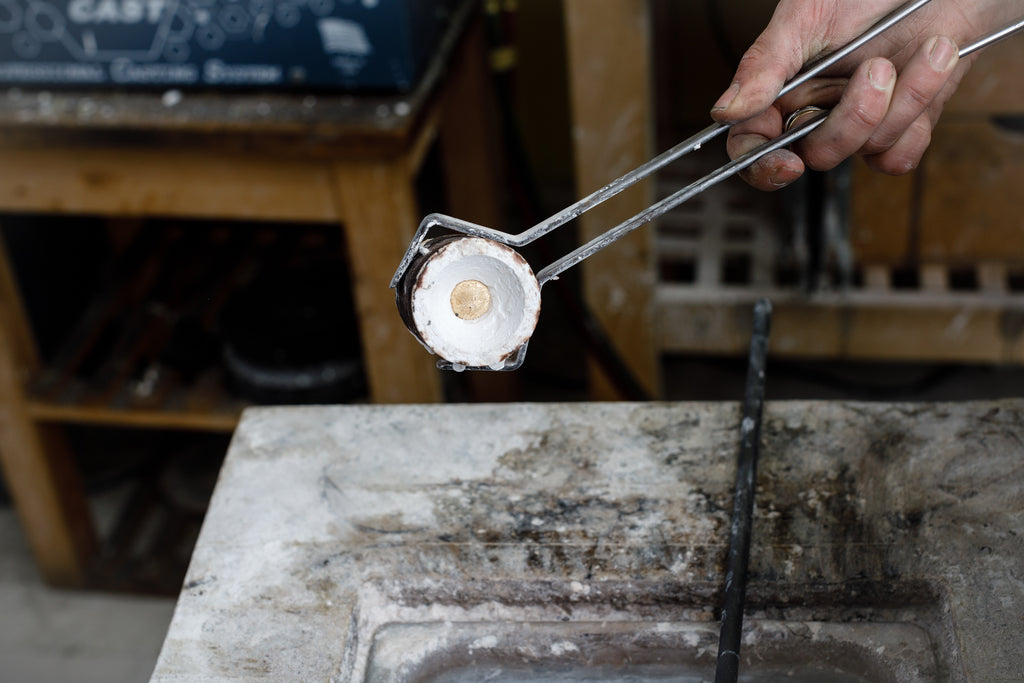
When the machine stops spinning, we can see the flask is now filled with gold. Here is that cute little button at the bottom of our casting.
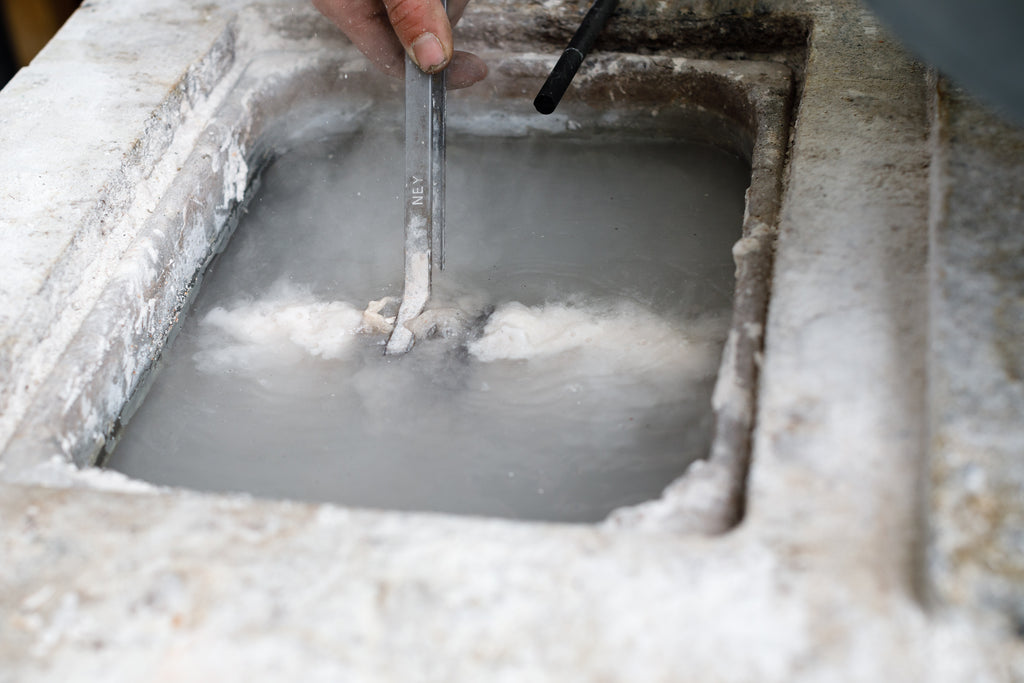
We submerge the flask in water to dissolve away the investment plaster. A solid gold ring is all that remains!
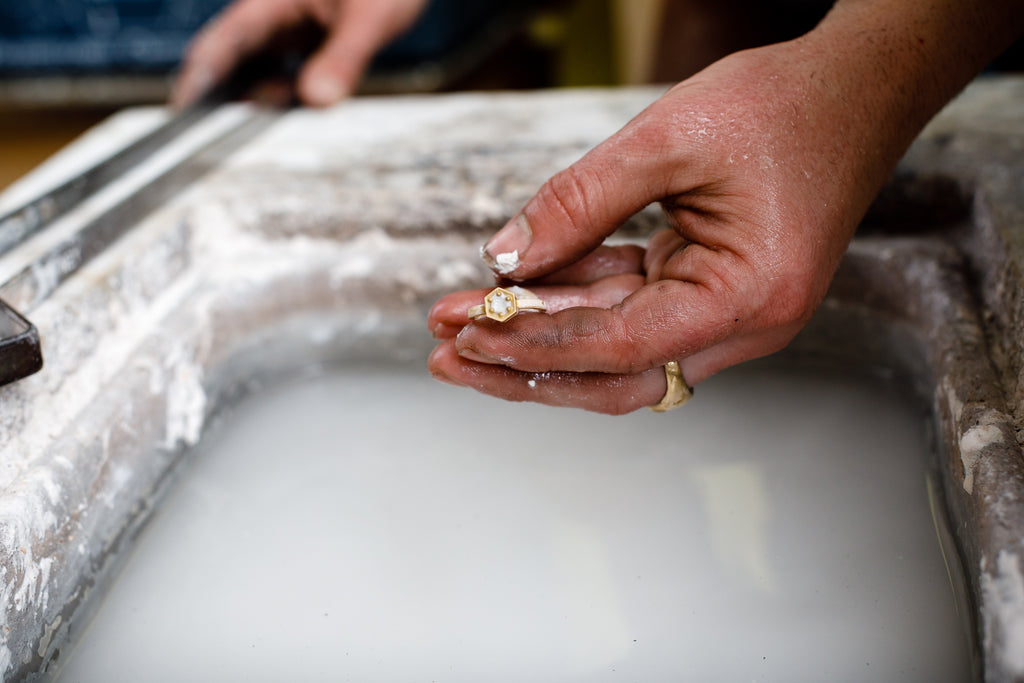
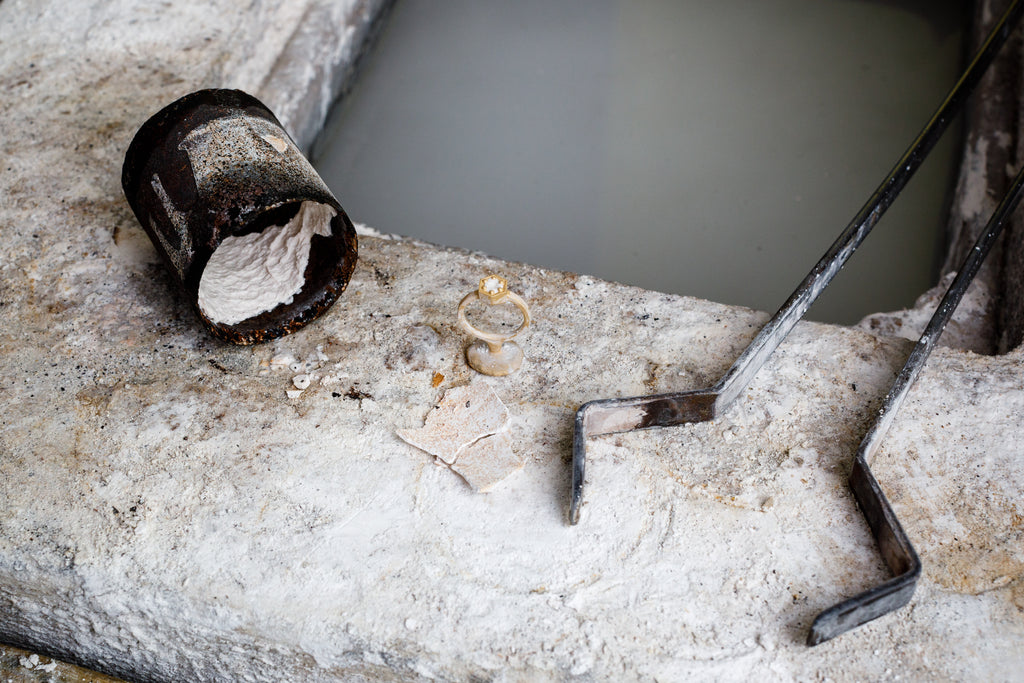
The ring is now made of gold but it’s far from refined. See how we clean, polish and set our diamond in Part 3 of our How It's Made series!
